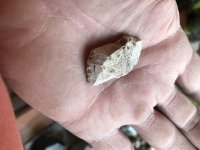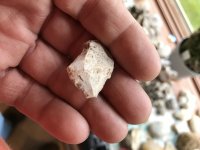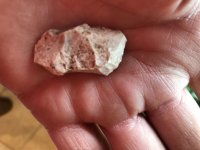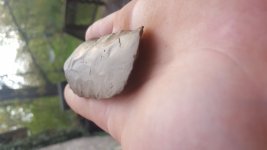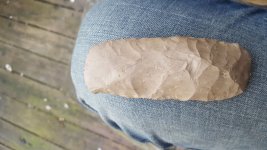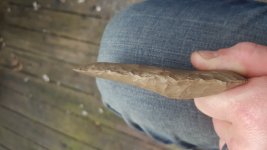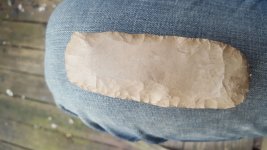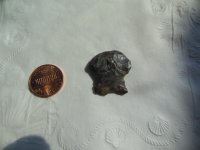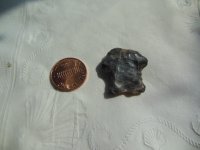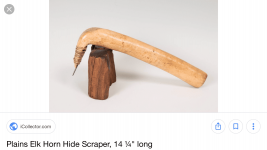OntarioArch
Sr. Member
I hope the significant wear on the business end of this scraper shows up in my amatuer pics! The flake scar ridges are worn way down, way smooth, compared to most of my other Onondaga chert pieces. The flake scars look abnormally shallow!
I am guessing this artifact was a lot longer during its useful days: it's hard to get a good grip on it now, and a good grip must have been essential for the years and years of scraping it must have gone through. The broken face has a nice patina on it - an old, old break I would say.
So, are uniface scrapers like this one generally believed to be Archaic or older?
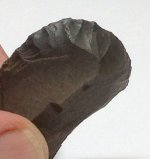
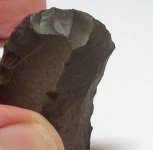
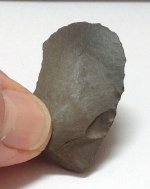
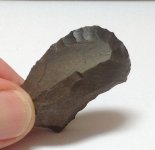
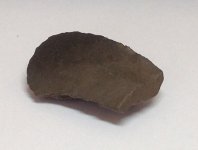
I am guessing this artifact was a lot longer during its useful days: it's hard to get a good grip on it now, and a good grip must have been essential for the years and years of scraping it must have gone through. The broken face has a nice patina on it - an old, old break I would say.
So, are uniface scrapers like this one generally believed to be Archaic or older?





Amazon Forum Fav 👍
Upvote
0


